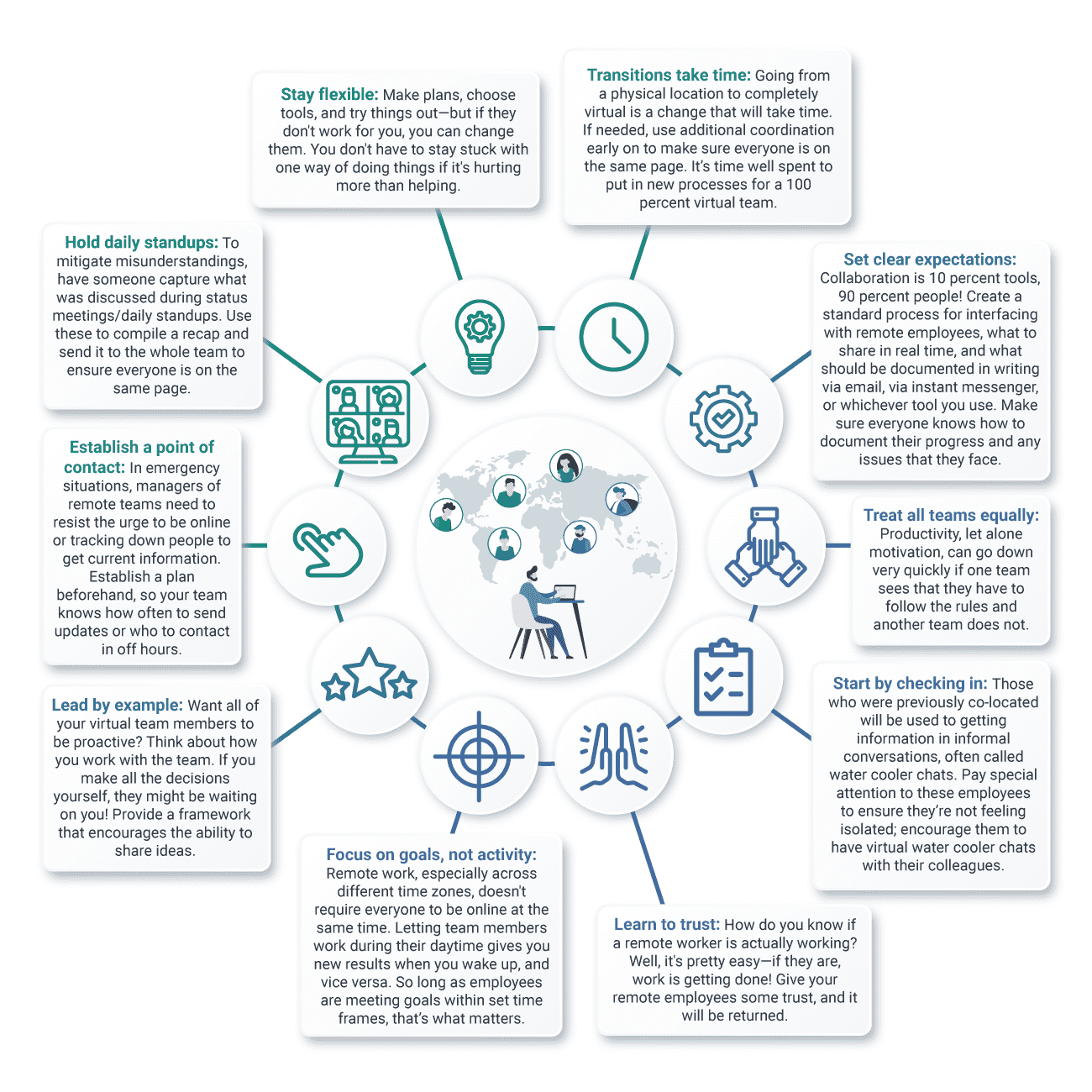Fifty-eight percent of knowledge workers now work remotely, and that percentage is likely to continue increasing the longer the pandemic keeps offices closed.1 Like the rest of us, companies are figuring out their “current normal” and how to keep operations flowing as smoothly as possible amid the disruptions.
Switching from being in a co-located workforce to completely virtual isn’t as simple as pushing a button. It’s one thing for an employee to adjust from commuting into an office to just commuting from their bed to their desk, but it’s another for those tasked with running the entire company.
As an organization that has worked with clients in a remote capacity for nearly two decades, we put together some tips for executives and business leaders navigating the “current normal” of remote work.

These are just a few thoughts on what to keep in mind when switching to remote work. Everyone’s situation will be unique, so choose software and processes that work for your company.
Another interesting consideration is, does this experience signal a permanent change in your business operations? Remote work was already on the uptick before the pandemic, growing 159 percent as of 2017.2 With more organizations figuring out what remote work looks like for them, it is likely that the virtual office is getting the trial run it needs to stick around.
If you’re interested in having a more in-depth conversation about our experience with remote work, contact us. We’d love to have a discussion and exchange ideas.
1Koetsier, J. (2020, March 21). 58% Of American Knowledge Workers Are Now Working Remotely.
2Wallace, B. (2020, March 24). Remote Work in the Coronavirus Economy.





